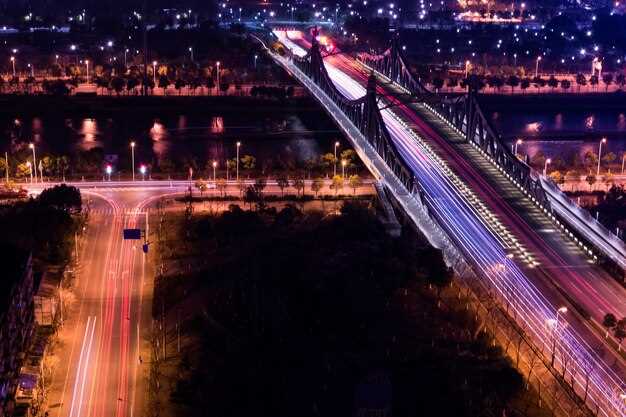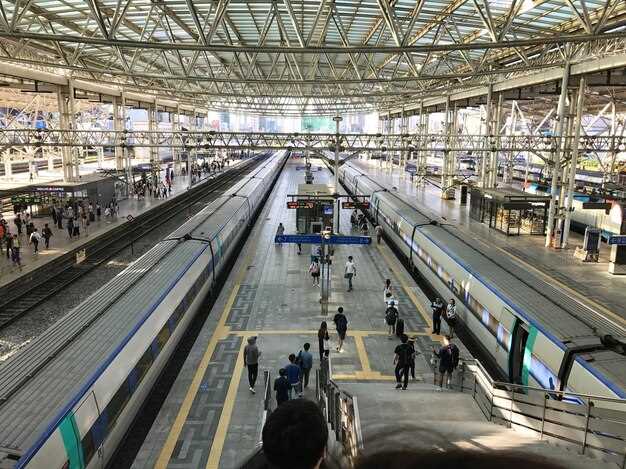Recommend rail-first transfers to cut transfer hours between arrival and onward legs. Alternatively hire a bilingual guide to navigate customs and terminus exits, smoothing queues and speeding onward movement.
On mondays, timetables shift; administration data provided by operators shows peak transfer times extending into early evenings, with 60–75 minute windows for common corridors, month after month needed. Hired staff in information desks coordinate guidance and momentary holds when bags arrive late.
underground arteries connect distant platforms to urban lines; terminus hubs become nodes where class barriers blur, with mobiles streaming real-time updates that keep people moving, noted by observers as a growing habit.
Administration teams hired to optimize flow coordinate arrivals, departures, and baggage handling; orders for chinese-speaking staff and flexible staffing were issued, leaving queues shorter and passengers calmer. green initiatives lower emissions and attract more riders.
Beijing Daxing’s Unintended Rail Link: How It Reshapes Global Transit
Recommendation: Deploy a mobile-first ticketing framework with registered profiles, accepting Mastercard and other electronic forms, including mobiles. Ensure seniors and students receive automatic discounts; apply zone-based fare rules with expiry checks and last-mile integration; provide a dedicated inquiries channel and a chinese-language interface; publish an appendix with calculation methods and codes for audit. Official guidelines are available at httpswwwbjgyolcomcn.
Operational data highlight advantages in the south district near a botanical zone, where passenger flow grew fastest. Monthly ridership averages 12.6 million, with a 14% uplift in peak months. Average journey time to central districts dropped from 52 minutes by bus to 25 minutes on rail, a gain of 52%. Electronic payments constitute 62% of transactions; Mastercard payments account for 18%; those with registered mobiles linked to a card rose to 31%. Fare levels rose by 3% year over year, while discounts for seniors and students offset net cost. Passes expire after 180 days of inactivity, with last activity checks every 60 days to minimize expire risk. The inquiries channel remains active from midnight to 07:00, aiding nonstandard schedules; customers using hand-held devices frequent windows near entrances to validate tickets. Ridership didnt decline meaningfully through quarter two.
Strategic actions include aligning driving patterns with rail arrivals to reduce congestion around the south gate, deploying hand-held readers for employees, and maintaining support channels in chinese-language mode. Ensure channel integration with electronic receipts and codes; maintain a robust mobile experience for those who rely on wallets and card-based payments like Mastercard. Keep idle-time policies transparent in the appendix, and provide guidance through inquiries when plane-like delays occur. Those efforts complement a broader initiative to connect remote neighborhoods to rapid corridors via a single, coherent network.
| Metric | Pre-change | Post-change | Impact |
| Average travel time to core districts | 52 min (bus) | 25 min (rail) | 27 min saved |
| Monthly ridership | 8.2 million | 12.6 million | +4.4 million |
| Electronic payments share | 40% | 62% | +22 pp |
| Mastercard share | 8% | 18% | +10 pp |
| Average fare (RMB) | 26 | 28 | +2 |
| Discount uptake (seniors/students) | low | moderate | ↑ uptake |
| Payment expiry window | 90 days | 180 days | longer validity |
| Inquiry response time | ≈12–18 min | ≈6 min | faster support |
| Key integration zone | central corridor | south botanical hub | broader reach |
Beijing–Tianjin Rail Time Savings and Schedule Patterns
Register for ticketing access via httpsgajbeijinggovcn to compare options; actual savings average 25–40 minutes on core legs; for capital-region travel, early morning or late-evening slots reduce delays; previous road times commonly exceed 90 minutes under congestion.
Schedule patterns show high-frequency departures, with off-peak trains every 7–12 minutes and peak trains every 4–6 minutes; fastest services clock around 28–36 minutes, depending on origin and final stop; previous trip times by auto could reach 60–120 minutes, underscoring rail advantages for business and day trips.
Practical tips include selecting options that minimize walking by using main entrances and side platforms; street-level signage enhances wayfinding; mutual connections between lines are rare, so consider through services if available; unicoms support may require register steps for some tickets; xincheng reports noted rising efficiency.
Issues to monitor include temporary maintenance, access-denied windows, and financial constraints for frequent travelers; noted improvements include streamlined check-ins and clearer timetables; cant accessed full feature sets yet could benefit from guided instructions; hello to staff helps with last-mile directions.
Driving dynamics around stations influence traveler choices; raised mutual-benefit initiatives across economic corridors; through-ticket options remain popular for longer trips; minutes savings should be tracked against previous experiences; street-level changes and xincheng-reported metrics help planners.
Step-by-Step: Transfer from Daxing Airport to Tianjin by High-Speed Rail

Purchase admission in advance via official sales channel or mobile app; options include a ticket counter, self-service machines, or online purchase. Youll need to present personal ID (passport or national ID) at entry; arriving tourists and nationals should confirm qualifications match travel plan.
Outside building, follow signs to rail access and park-and-ride zones; taxis or rideshare services offer fastest first mile.
Sales channel guidance: buy via app or at counters; provisional timetable may shift; check latest details before departure.
At entry gate, show admission and personal ID; staff verify match to reservation; if didnt pre-purchase, expect longer lines.
On platform, use digital boards to locate platform number and carriage; specify carriage with staff if needed; boarding procedure begins here; mobiles are accepted for digital tickets.
Boarding notes: keep luggage light to move quickly; enter your assigned carriage without delay; you can store baggage in racks near your seat.
Ride time: around 30-40 minutes; comfortable seating, steady ride, minimal motor noise.
Arrival and connections: alight at Tianjin hub; exit toward metro, bus, or taxi; from there planning options to reach your hotel or educational campus.
Detailed tips: best approach for tourist travelers is to use advance admission, specify carriage, and store tickets on mobiles; youll save time by arriving early; nationals arriving for educational purposes should carry personal ID and qualifications to satisfy checks; lucky travelers who use official channel experience smoother process; plan includes park-and-ride option and simple exit from hub.
Intermodal Connectivity: Aligning Flight Arrivals with Rail Departures
Coordinate arrivals and rail departures through a single, synchronized schedule and a dedicated channel accessible via apps, kiosks, and on-site displays. Tell passengers when onward connections close and what steps to take if delays occur.
Establish a joint operations unit including government representatives and station personnel stationed at shared offices; give the program a clear name; ensure a unified signage system, with real-time updates pushed to counters and digital boards.
Integrate real-time data feeds linking flight information with rail timetables; use resources and APIs to create dynamic transfer guidance; aim for a level of service that minimizes risk of missed connections, especially for aged or physically challenged travelers. Look for opportunities to improve links to many stations and reduce walking distance between platforms and immigration desks.
Payment options include cash and mastercard; staff at offices handle card purchases and refunds; ensure requirements for ticket issuance and that a purchased ticket comes with a receipt; if a card reader fails, offer alternatives.
Corridor context highlights cross-border flows such as vietnam-beijing-moscow as a model for intermodal links; signage should point to these corridors and surface real-time occupancy data for queues at taxis and ride-hailing pickups.
Regulatory and cultural context addresses immigration processes and temporary-entry rules; provide multilingual support; note there is a museum near the hub and nearby villages that welcome visitors; include a local temple resource for orientation. A quoted reference includes 机动车驾驶证申领和使用规定公安部90号令 to illustrate cross-border compliance; theres a need to map these norms to frontline staff training and immigration desks.
Operational notes ensure redundancy in case a traveler’s card fails; for the applicant, if a ticket was purchased but didnt keep the receipt, staff can reference the requirements and offer printed proofs; taxis remain available for onward movement; for further context see httpswwwbjgyolcomcn.
For additional best practices, consult a leading industry overview at https://uitp.org
Ticketing, Fares, and Seat Availability for Daxing Rail Trips
Ticketing options include online channels (ctrip and other portals), offline counters, and partner desks in areas near entryways. A comprehensive process begins with advance booking, then, if needed, manual verification at a stand inside the terminal. For frequent travelers, permanent passes can be issued with permits, cant be issued without ID; receipts will be issued after purchase.
Fares are published in a comprehensive grid: duration-based bands, distance zones, and any peak-hour surcharges. Online displays reflect taxes, service charges, and occasional promos; offline desks may show a comparable set of numbers on receipts. It helps to learn what applies to your trip and note specified conditions. Advance purchases often yield better prices; if unsure, leave a request at counter or use ctrip to check options.
Seat inventory updates every few minutes; sold status triggers stand-by options; booked seats are flagged in the order summary. In high-demand periods, sold-out times may finish quickly, so plan ahead. Party travelers should coordinate visits for preferred seats; early booking suggests likely success. For Danish visitors or other groups, advance booking is advised; permits or letter of approval may speed up check-in. Taxis or ride-hailing can be used for last-mile travel to entry points; options include bus, metro, or private transfer.
What to prepare: a valid ID, an order number, and any specified documents; keep receipts, and carry a letter if required by party arrangements. For offline purchases, finish processes at the stand; for online bookings, you can download a receipt and prove travel status with a mobile or printed copy. Learn advance notice and keep multiple copies to leave with companions. Duration of travel varies by track and stops; in most cases, a 15–40 minute journey time is typical for regional routes; for longer legs, duration can extend beyond an hour.
Global Logistics Impact: Freight Corridors and Supply Chains

Implement a cross-border freight corridor program to shorten cycle times, consolidate orders, and align issuance with real-name verification.
Key actions and data insights:
- Identify urban-rural freight flows by linking railway lines, road networks, and key logistics hubs; plan investments to reduce empty runs and cut dwell times by 12–20% on pilot routes.
- Adopt a unified ticket issuance and order management approach; ensure ticket details reflect current demand and permit status; also maintain contact with agencies for validation when needed.
- Establish a joint inquiry channel and bilingual lounge desk (chinese-language) to accelerate issue resolution for shippers, carriers, and suppliers; this supports institution-wide coordination.
- Mandate real-name registration for carriers and drivers; this enhances traceability, assigns a member contact, and supports staying compliant with corridor rules.
- Develop a program for those hired to operate services along corridors; provide ongoing training on safety, document checks, and anti-illegal practices; heshe language guidance should be included.
- Set permit and order issuance standards by corridor risk; vary requirements by urban-rural context; if unable to issue permit, escalate to inquiry; allow exceptions in urgency while avoiding illegal routes or taxi diversions.
- Improve train services along railway corridors by integrating with urban planning; optimize schedules to support parcel deliveries and bulk freight; ensure order and issuance processes stay synchronized with ticketing.
Additional governance considerations:
- Contact protocols between agencies must be formalized; logs of inquiries and resolutions should be shared with institutional partners; confucius-inspired values such as trust and reciprocity reinforce staying aligned with goals.
- Logistics lounge spaces should host briefings for member companies and hired drivers; use those facilities for real-time updates on issuance, order status, and service changes.
- Performance measurement: track on-time delivery, order accuracy, and illegal activity suppression; provide periodic reports to agencies and institutions to support planning right now and alert else where.

 Beijing Daxing Airport – The Unintended Railway Revolution Transforming Global Transit" >
Beijing Daxing Airport – The Unintended Railway Revolution Transforming Global Transit" >



















